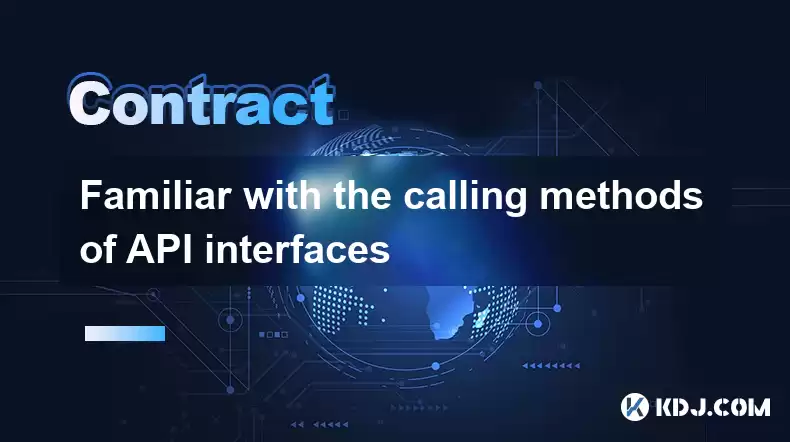-
 Bitcoin
Bitcoin $118700
1.60% -
 Ethereum
Ethereum $4230
-1.16% -
 XRP
XRP $3.197
-2.08% -
 Tether USDt
Tether USDt $1.000
-0.01% -
 BNB
BNB $803.3
-0.46% -
 Solana
Solana $183.2
0.06% -
 USDC
USDC $0.9999
0.00% -
 Dogecoin
Dogecoin $0.2343
-3.95% -
 TRON
TRON $0.3390
1.00% -
 Cardano
Cardano $0.8020
-1.93% -
 Hyperliquid
Hyperliquid $45.18
2.39% -
 Chainlink
Chainlink $22.04
3.02% -
 Stellar
Stellar $0.4449
-1.66% -
 Sui
Sui $3.872
-2.14% -
 Bitcoin Cash
Bitcoin Cash $570.6
-0.37% -
 Hedera
Hedera $0.2593
-2.92% -
 Ethena USDe
Ethena USDe $1.001
-0.01% -
 Avalanche
Avalanche $23.83
-3.79% -
 Litecoin
Litecoin $124.5
1.83% -
 Toncoin
Toncoin $3.335
-2.74% -
 UNUS SED LEO
UNUS SED LEO $9.029
0.26% -
 Shiba Inu
Shiba Inu $0.00001363
-2.31% -
 Uniswap
Uniswap $10.93
-1.42% -
 Polkadot
Polkadot $4.060
-2.29% -
 Dai
Dai $1.000
-0.01% -
 Cronos
Cronos $0.1631
2.71% -
 Ethena
Ethena $0.7746
3.06% -
 Pepe
Pepe $0.00001208
-3.73% -
 Bitget Token
Bitget Token $4.445
-1.47% -
 Monero
Monero $268.7
-2.30%
Familiar with the calling methods of API interfaces
RESTful APIs use HTTP request methods and JSON data, offering ease of use but with variable performance and security depending on implementation.
Feb 23, 2025 at 12:30 pm

A Comprehensive Guide to API Interface Invocation Methods in the Cryptocurrency Sphere
Key Points:
- Understanding the role of APIs in cryptocurrency
- Overview of popular API invocation methods
- Step-by-step instructions for each method
- Comparison of methods based on security, efficiency, and ease of use
- Best practices for securing API access
- Troubleshooting common API issues
Introduction
Application Programming Interfaces (APIs) play a crucial role in the cryptocurrency ecosystem, enabling seamless communication and data exchange between various platforms and applications. Understanding the different methods for invoking API interfaces is essential for developers and users alike.
API Invocation Methods
1. RESTful APIs (Representational State Transfer)
- Overview: RESTful APIs use standardized HTTP request methods (GET, POST, PUT, DELETE) to interact with resources.
Steps:
- Send an HTTP request to a specific resource URI (Uniform Resource Identifier).
- Include request parameters (e.g., query parameters, request body) as specified by the API documentation.
- Receive an HTTP response containing the requested data or an error message.
- Security: Typically uses HTTPS encryption and authentication mechanisms like API keys or OAuth.
2. gRPC (Google Remote Procedure Call)
- Overview: gRPC is a high-performance, open-source framework for building and calling RPCs.
Steps:
- Define a service interface using Protocol Buffers (protocol buffers).
- Generate client and server code from the interface definition.
- Establish a gRPC channel between the client and server applications.
- Invoke RPC methods as if calling local functions on the remote server.
- Security: Supports transport-layer security (TLS) and authentication schemes.
3. WebSockets
- Overview: WebSockets provide a real-time bidirectional communication channel over the web.
Steps:
- Establish a WebSocket connection between the client and server using the "ws://" or "wss://" protocol.
- Send and receive messages in a continuous manner.
- Close the connection when communication is complete.
- Security: Supports WebSocket extensions for data encryption and authentication.
4. Pub/Sub (Publish/Subscribe)
- Overview: Pub/Sub is a messaging pattern where one (publisher) sends messages to multiple subscribers (consumers).
Steps:
- Create a topic for the messages.
- Publishers can publish messages to the topic.
- Subscribers can subscribe to the topic and process the messages.
- Security: Typically secured using access control lists (ACLs) or message-level encryption.
Comparison of Methods
| Feature | RESTful | gRPC | WebSockets | Pub/Sub |
|---|---|---|---|---|
| Data Format | JSON, XML | Protocol Buffers | Binary protocol | Protocol Buffers |
| Performance | High (if optimized) | Low latency and high throughput | Real-time | Variable |
| Security | Moderate | High | Moderate | Moderate |
| Ease of Use | Easy to implement | Requires code generation | Requires real-time handling | Requires message publishing/subscription |
Best Practices for API Security
- Use secure protocols (HTTPS, TLS).
- Implement authentication mechanisms (API keys, OAuth).
- Limit API access to trusted origins.
- Regularly monitor API activity for suspicious patterns.
- Consider rate limiting to prevent excessive requests.
Troubleshooting Common API Issues
- Connectivity issues: Ensure that the client and server can establish a connection.
- Incorrect request parameters: Verify the format, data type, and value of request parameters.
- Authentication failures: Check the validity of API keys or credentials.
- API errors: Interpret the error codes and messages returned by the API interface.
- Performance issues: Optimize the API request/response cycle for efficiency.
FAQs
What is an API key?
An API key is a unique identifier used to authenticate API requests and control access to API resources.
How do I secure my API key?
Store your API key securely, do not share it with others, and consider using it only within trusted environments.
What are the benefits of using gRPC?
gRPC offers high performance, low latency, and efficient data serialization and deserialization.
When should I use WebSockets?
WebSockets are ideal for scenarios where real-time, bidirectional communication is required.
What is the difference between a publisher and a subscriber in Pub/Sub?
A publisher sends messages to a topic, while subscribers receive messages from the topic and process them.
Disclaimer:info@kdj.com
The information provided is not trading advice. kdj.com does not assume any responsibility for any investments made based on the information provided in this article. Cryptocurrencies are highly volatile and it is highly recommended that you invest with caution after thorough research!
If you believe that the content used on this website infringes your copyright, please contact us immediately (info@kdj.com) and we will delete it promptly.
- LYNO AI & XRP: Decoding the ROI Potential in a Shifting Crypto Landscape
- 2025-08-11 04:30:11
- Cryptos on the Cusp: Cold Wallet, Price Breakouts, and What's Hot Now
- 2025-08-11 04:50:11
- Dogecoin, Meme Coins, and Remittix Utility: What's the Hype?
- 2025-08-11 04:50:11
- Sky Bet, ESPN, and the Spartans Bonus: A Betting Landscape Overview
- 2025-08-11 05:11:16
- Altcoin Buyouts & Market Removals: Crypto Development's Wild Ride
- 2025-08-11 04:30:11
- Bitcoin Banks Arrive: El Salvador's Bold Play with Investment Banks and Crypto
- 2025-08-11 04:55:12
Related knowledge

Is it possible to adjust the leverage on an open position on KuCoin?
Aug 09,2025 at 08:21pm
Understanding Leverage in KuCoin Futures TradingLeverage in KuCoin Futures allows traders to amplify their exposure to price movements by borrowing fu...

What cryptocurrencies are supported as collateral on KuCoin Futures?
Aug 11,2025 at 04:21am
Overview of KuCoin Futures and Collateral MechanismKuCoin Futures is a derivatives trading platform that allows users to trade perpetual and delivery ...

What is the difference between realized and unrealized PNL on KuCoin?
Aug 09,2025 at 01:49am
Understanding Realized and Unrealized PNL on KuCoinWhen trading on KuCoin, especially in futures and perpetual contracts, understanding the distinctio...

How does KuCoin Futures compare against Binance Futures in terms of features?
Aug 09,2025 at 03:22am
Trading Interface and User ExperienceThe trading interface is a critical component when comparing KuCoin Futures and Binance Futures, as it directly i...

How do funding fees on KuCoin Futures affect my overall profit?
Aug 09,2025 at 08:22am
Understanding Funding Fees on KuCoin FuturesFunding fees on KuCoin Futures are periodic payments exchanged between long and short position holders to ...

What is the distinction between mark price and last price on KuCoin?
Aug 08,2025 at 01:58pm
Understanding the Basics of Price in Cryptocurrency TradingIn cryptocurrency exchanges like KuCoin, two key price indicators frequently appear on trad...

Is it possible to adjust the leverage on an open position on KuCoin?
Aug 09,2025 at 08:21pm
Understanding Leverage in KuCoin Futures TradingLeverage in KuCoin Futures allows traders to amplify their exposure to price movements by borrowing fu...

What cryptocurrencies are supported as collateral on KuCoin Futures?
Aug 11,2025 at 04:21am
Overview of KuCoin Futures and Collateral MechanismKuCoin Futures is a derivatives trading platform that allows users to trade perpetual and delivery ...

What is the difference between realized and unrealized PNL on KuCoin?
Aug 09,2025 at 01:49am
Understanding Realized and Unrealized PNL on KuCoinWhen trading on KuCoin, especially in futures and perpetual contracts, understanding the distinctio...

How does KuCoin Futures compare against Binance Futures in terms of features?
Aug 09,2025 at 03:22am
Trading Interface and User ExperienceThe trading interface is a critical component when comparing KuCoin Futures and Binance Futures, as it directly i...

How do funding fees on KuCoin Futures affect my overall profit?
Aug 09,2025 at 08:22am
Understanding Funding Fees on KuCoin FuturesFunding fees on KuCoin Futures are periodic payments exchanged between long and short position holders to ...

What is the distinction between mark price and last price on KuCoin?
Aug 08,2025 at 01:58pm
Understanding the Basics of Price in Cryptocurrency TradingIn cryptocurrency exchanges like KuCoin, two key price indicators frequently appear on trad...
See all articles

























































































